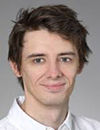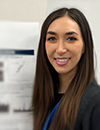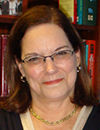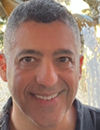
Innovations in Flow Cytometry & Extracellular Vesicles 2024
09:00
2024年11月18日
Slate Room

Steve Soper, Foundation Distinguished Professor; Director, Center of BioModular Multi-scale System for Precision Medicine, Adjunct Professor, Ulsan National Institute of Science & Technology, The University of Kansas, United States of America
Pre-Conference Training Course from 09:00-11:00
Microfluidics and Nanofluidics for Diagnostic Tests
[Separate Registration Required to Attend this Pre-Conference Training Course]
11:00
2024年11月18日
Slate Room

Leanna Levine, Founder & CEO, ALine, Inc. United States of America
Pre-Conference Training Course from 11:00-13:00
Microfluidic Product Development
[Separate Registration Required to Attend this Pre-Conference Training Course]
This training course will explore the translation of science and nascent engineering programs into a well-structured product development program to address Reduction to Practice or proof of concept; Human factors engineering - what is it and why it matters; Design Control and Risk Control Roadmap for Development; Design for Manufacture and Assembly; Scale -up progression and manufacturing methods.
**A Must-Attend for Companies Embarking on Microfluidic Product Development**
13:00
2024年11月18日
Conference Entrance
Main Conference Registration, Materials Pick-Up and Networking in the Exhibit Hall
13:30
2024年11月18日
Plenary Ballroom
Lab-on-a-Chip and Microfluidics World Congress 2024
Opening Plenary Session
13:45
2024年11月18日
Plenary Ballroom
Welcome and Introduction to the Lab-on-a-Chip and Microfluidics World Congress 2024 by the Chairs: Professor Dino Di Carlo and Dr. Leanna Levine
2024 Conference Focus and Themes Highlighted Over the 3-Day Event
14:00
2024年11月18日
Plenary Ballroom
View Agenda of Conference Plenary Session on the Agenda Page of the Lab-on-a-Chip and Microfluidics 2024 Track
18:45
2024年11月18日
Exhibit Hall
Networking Reception in the Exhibit Hall with Beer, Wine and Dinner.
Network with Colleagues, Engage with the Exhibitors and View Posters.
20:15
2024年11月18日
Exhibit Hall
Close of Day 1 of the Conference
20:30
2024年11月18日
Slate Room

Noah Malmstadt, Professor of Chemical Engineering and Materials Science, University of Southern California, United States of America
3D-Printing of Microfluidics Training Course
[Separate Registration Required to Attend this Training Course]
07:30
2024年11月19日
Exhibit Hall
Morning Coffee, Continental Breakfast and Networking in the Exhibit Hall
08:45
2024年11月19日
Ballroom A
For Programming Details for Morning Sessions -- Please see Agenda in Lab-on-a-Chip Track and Organoids Track
12:30
2024年11月19日
Exhibit Hall
Networking Buffet Luncheon -- Network with Exhibitors and Colleagues, View Posters
13:20
2024年11月19日
Ballroom B

Michael Graner, Professor, Dept of Neurosurgery, University of Colorado Anschutz School of Medicine -- Chairperson
Session Title: Single Cell Analysis and EV Research via Flow Cytometry
13:30
2024年11月19日
Ballroom B

Daniel Chiu, A. Bruce Montgomery Professor of Chemistry, University of Washington, United States of America
High-Resolution Analysis of Single Extracellular Vesicles and Particles with Digital Flow Cytometry
We have developed a multi-parametric high-throughput flow-based method for the analysis of individual extracelluar vesicles and particles (EVPs), and a super-resolution method for sizing individual EVPs in a high-throughput fashion. EVPs are highly heterogeneous and comprise a diverse set of surface protein markers as well as intra-vesicular cargoes. Yet, current approaches to the study of EVPs lack the necessary sensitivity and precision to fully characterize and understand the make-up and the distribution of various EV subpopulations that may be present. Digital flow cytometry (dFC) provides single-fluorophore sensitivity and enables multiparameter characterization of EVPs, including sin-gle-EVP phenotyping, the absolute quantitation of EVP concentrations, and biomarker copy numbers. dFC has a broad range of applications, from analysis of single EVPs such as exosomes or RNA-binding proteins to characterization of therapeutic lipid nano-particles, viruses, and proteins. dFC also provides absolute quantita-tion of non-EVP samples such as dyes, beads, and Ab-dye conjugates.
14:00
2024年11月19日
Ballroom B

Yu-Hwa Lo, Professor, University of California San Diego, United States of America
AI Enabled 2D and 3D Image-Guided Cell Analyzers and Sorters
Single cell analysis is playing an important role in biological and medical research. Flow cytometers and fluorescence-activated cell sorters (FACS) are workhorse for single cell analysis, offering high throughput and the ability of isolating cells of high interest, especially those rare cells or new cell types. On the other hand, microscopy, especially 3D microscopy, can produce high information contents, revealing important insight in cell phenotypes and high spatial information although cell isolation in a microscope platform with techniques such as laser microdissection is cumbersome and subject to cell damage. We present results of image-guided cell sorters that possess the merits of high throughput and high content imaging in a single system. The image-guided FACS system uses a microfluidic cartridge with an on-chip piezoelectric actuator to sort cells of interest into tubes or 384-well plates. The cell sorting criteria is based on the 2D images of cells, defined by either operator specified gating criteria or AI with or without human instructions. Going beyond the systems with 2D images, we further demonstrate flow cytometers that produce 3D fluorescent, scattering, and transmission images of each single cell at a throughput of 1000 cells/s, which is 1000-10,000 times faster than a fluorescent confocal microscope. The cell tomography offers far more information than 2D images and is more adaptive to AI and machine learning. Both the 2D and 3D image-guided cell analyzers and sorters are powered by artificial intelligence with convolutional neural networks. With AI capabilities based on semi-supervised learning, both systems have shown exceptional capabilities for classification and cell type discovery. Results from several experiments, including the diagnosis of leukemia and NASH diseases, DNA damage assessment, protein translocations under drug treatments, cell cycle detection, and cell fate prediction (the so-called Day Zero experiment) will be discussed in the presentation.
15:00
2024年11月19日
Ballroom B

Joshua Welsh, Staff Scientist, Advanced Technology Group, Becton Dickinson, United States of America
Navigating Small Particle Flow Cytometry
Small particle analysis using flow cytometry has rapidly developed in the last decade and is arguably the most developed flow cytometry discipline with regard to standardization. Consideration and resources for tackling small particle flow cytometry can be daunting for newcomers to the area. This talk will outline key considerations and available resources for making the most out of your samples.
15:30
2024年11月19日
Ballroom B

Gregory Cooksey, Project Leader, National Institute of Standards and Technology (NIST), United States of America
A Microfluidic Serial Cytometer to Estimate Per-Cell Uncertainty and Single Object Kinetic Measurements
NIST has developed a serial microfluidic cytometer that repeats the interrogation of objects at multiple points along a flow path, which enables direct assessment of uncertainty in cytometry measurements (DiSalvo et al., Lab Chip 2022). We have achieved per-particle measurement variation below 2 % at throughputs above 100 s-1 and detection limits and dynamic range comparable to conventional cytometers. This presentation will introduce various measurement capabilities novel to our serial cytometry, including 1) uncertainty quantification, 2) signals analysis that permit estimation of velocity, size, and shape of samples, including elastically deformable particles and mitotic cells, and 3) tracking dynamics of individual objects over time. Utilizing microdroplets, we demonstrated temporal tracking of an enzymatic reaction on a per-droplet basis in real time. An upstream fluidic mixing system is also used to create known concentrations and dilutions of fluorophores in droplets, which permits direct calibration of measured fluorescence intensity to fluorophores in solution.
16:00
2024年11月19日
Ballroom B

Joseph de Rutte, CEO and Co-Founder, Partillion Bioscience, United States of America
Nanovials: Bridging Microfluidics with Flow Cytometry to Enable Functional Screening of Cells
In this talk, I will provide background on utilizing hydrogel microparticles in conjunction with flow cytometers to screen and isolate individual cells based on their functional properties, such as secretion. I will also expand on how this capability is being leveraged to accelerate antibody discovery workflows by screening antibody secreting cells directly based on antibody function (e.g. specificity, affinity, cell binding).
16:30
2024年11月19日
Ballroom B

Ramin Hakami, Co-Director of the Center for Infectious Disease Research, George Mason University, United States of America
Lab-on-a-Chip Platform for Functional Studies of Extracellular Particles
Extracellular particles (EPs) such as small extracellular vesicles (sEV), microvesicles, exomeres, etc., are potent bio-functional nanoparticles released by cells that facilitate intercellular communication. They are constitutively released in vivo and in vitro and can trigger a wide range of biological responses upon uptake by recipient cells. Despite their recognized significance, there are still significant gaps in the understanding of specific functional roles of EPs from different tissue and cell types due to various factors, including the heterogeneity and complexity of EPs. In vitro approaches to investigate EPs typically require costly and/or lengthy purification steps to obtain target EPs of interest. Most importantly, in vitro investigation of EP function commonly involves treating 2D-cultured recipient cells with a certain number of EPs simultaneously, poorly replicating the constant and gradual release of EPs in vivo. To help address these issues, we have developed a microfluidic chip system that facilitates the live exchange of distinct subpopulations of EPs between co-cultured cell populations. The inter-cell region acts as a selective barrier filled with one of several different hydrogels that can permit diffusion of specific size ranges of EPs. Recently, we have also successfully produced second generation of our chip platform with significantly enhanced features. Our optimizations for the chip’s design and fabrication have enhanced production, convenience, and efficiency of use. In addition, they allow the use of a distinct hydrogel formulation to enable exchange of exomere-sized nanoparticles while preventing sEV exchange.
17:00
2024年11月19日
Ballroom B

Sven Kreutel, CEO, Particle Metrix, Inc., United States of America
Characterization of Extracellular Vesicles and Other Biological Nanoparticles using Nanoparticle Tracking Analysis (NTA)
Nanoparticle Tracking Analysis (NTA) has emerged as a fast and vital characterization technology for Extracellular Vesicles (EVs), Exosomes and other biological material in the size range from 30 nm to 1 μm. While classic NTA scatter operation feeds back the size and total particle concentration, the user typically cannot discriminate whether the particle is a vesicle, protein aggregate, cellular trash or an inorganic precipitate. The fluorescence detection capabilities of f-NTA however enables the user to gain specific biochemical information for phenotyping of all kinds of vesicles and viruses. Alignment-free switching between excitation wavelengths and measurement modes (scatter and fluorescence) allow quantification of biomarker ratios such as the tetraspanins (CD63, CD81 and CD9) within minutes. Furthermore, specific co-localization studies using c-NTA gives a deeper understanding of the composition of biomarker on single particle.
17:30
2024年11月19日
Ballroom B

Alison Fujii, Field Application Scientist, ONI Inc., United States of America
Characterization of Extracellular Vesicles Using the ONI Nanoimager Super-Resolution Microscope
This presentation will explore the characterization of extracellular vesicles (EVs) using the ONI Nanoimager's super-resolution capabilities. Key topics include the importance of EVs in biological research, the advanced imaging techniques of the ONI Nanoimager, and practical applications for detailed EV analysis. Attendees will learn how super-resolution microscopy can provide deeper insights into EV biology.
18:00
2024年11月19日
Ballroom B

Jean-Luc Fraikin, CEO, Spectradyne, United States of America
Quantifying Extracellular Vesicles (EVs) in Complex Biofluids with Spectradyne’s ARC(tm) Particle Analyzer
Spectradyne’s ARC particle analyzer measures EV size, concentration & phenotype down to 50 nm diameter. In this presentation, we will demonstrate the ARC’s ability to accurately quantify EV subpopulations directly in serum, without SEC or other significant sample prep. The ARC particle analyzer is uniquely well suited to analyzing complex, heterogeneous samples. Fast and easy to use-no calibration, alignment, or cleaning required-the ARC is rapidly being adopted in EV applications for its accurate and direct measurements of particle size, concentration, and phenotype at the nanoscale.
18:30
2024年11月19日
Exhibit Hall
Networking Reception with Beer, Wine and Dinner in the Exhibit Hall -- Network with Exhibitors, Colleagues and View Posters
20:15
2024年11月19日
Exhibit Hall
Close of Day 2 Main Conference Programming
20:30
2024年11月19日
Slate Room

Shuichi Takayama, Professor, Georgia Research Alliance Eminent Scholar, and Price Gilbert, Jr. Chair in Regenerative Engineering and Medicine, Georgia Institute of Technology & Emory University School of Medicine, United States of America
Introduction to Microfluidics Training Course
[Separate Registration Required to Attend this Training Course]
07:30
2024年11月20日
Exhibit Hall
Morning Coffee, Continental Breakfast and Networking in the Exhibit Hall
08:00
2024年11月20日
Ballroom A
Industry Breakout Round-Tables: Each Round-Table Moderated by an Industry Participant -- Delegates Engage with the Moderator to Discuss Commercialization Themes
Moderators are:
David Weitz, Harvard - Microfluidics
Roger Kamm, MIT - Organs-on-Chips
Greg Cooksey, NIST - Flow Cytometry
09:00
2024年11月20日
Ballroom A and B
For Morning Sessions Talks, See Agenda in LOAC Track and Organoids Track and this Track
09:59
2024年11月20日
Ballroom B
Session Title: Exploring Further the Use of Flow Cytometry in the EV Space and Biological Investigations into EVs
10:00
2024年11月20日
Ballroom B
Paul Patrone, Physicist and Staff Scientist, Applied and Computational Mathematics Division, National Institute of Standards and Technology (NIST), United States of America
Foundations of Metrology and Uncertainty Quantification in Cytometry
Uncertainty quantification (UQ) for cytometry remains a largely unexplored area, especially as a route for establishing cytometers as quantitative measurement tools. In this talk, I discuss principles of UQ adapted to cytometry measurements in the context of harmonization of measurements across instruments and other metrological issues.
10:30
2024年11月20日
Ballroom B

John Nolan, CEO, Cellarcus Biosciences, Inc., United States of America
Single Vesicle Measurements and the Optimization and Validation of EV Production and Manufacturing
Extracellular vesicles (EVs) are involved in diverse physiological and pathological processes and have attracted attention as potential therapeutics. Sources of potential therapeutic EV preparations include EVs from native or engineered cells in culture or from biofluids, and this source material might be fractionated to enrich EVs relative to other biofluids, and the resulting enriched EVs may be further modified, for example by loading with cargo or surface functionalization with a target molecule. In all cases the functional activities of the resulting EV preparations are presumed to stem from the individual EVs, and their molecular cargo, present with thin the preparation, but direct measurements of these EVs can be challenging. Single EV analysis methods, including single vesicle flow cytometry, can provide measurements of EV concentrations and cargo with the molecular resolution and analytical rigor to support therapeutic EV development and application. In this presentation I’ll review the state of the science of single EV measurement, applications in EV production and manufacturing, and highlight outstanding challenges for the field.
11:00
2024年11月20日
Ballroom B

Lynn Pulliam, Professor of Laboratory Medicine and Medicine, University of California-San Francisco, United States of America
Using Extracellular Vesicles to Diagnose and Follow Neurodegenerative Processes
Diagnosing neuro-cognitive disorders has been challenging and doing so without invasive and expensive procedures even more difficult. My lab has been interested in diagnosing chronic cognitive impairment in HIV infection and more recently long COVID using neuronal enriched extracellular vesicles, The goal is to identify liquid biomarkers associated with cognitive impairment and follow these during and after treatment. In addition, studies may identify common and distinct processes in neuro-degeneration that may help in drug interventions.
11:30
2024年11月20日
Ballroom B

Terry Morgan, Professor, Oregon Health and Science University (OHSU), United States of America -- Conference Track Co-Chairperson
NanoFACS and Bioassays
12:00
2024年11月20日
Ballroom B

Malgorzata Witek, Associate Research Professor, University of Kansas, United States of America
Liquid Biopsy Core (LBC) - Enabling Tools for the Isolation of Liquid Biopsy Markers and Their Molecular Analysis
Liquid biopsies are minimally invasive tests that can be performed frequently, providing “real-time” information on disease status to improve patient outcome. Analyzing different biomarkers present in liquid biopsies, including circulating tumor cells (CTCs), cell-free DNA (cfDNA), and extracellular vesicles (EVs), requires enrichment to select the low abundant disease-associated markers from clinical samples. The LBC provides a diverse range of technologies that are directed at both enriching liquid biopsy markers and their downstream molecular analysis. The LBC uses a combination of microfluidics with full process automation for enriching the full complement of liquid biopsy markers with exquisite analytical figures-of-merit. As examples of utility of LBC technologies, we will present clinical data on identifying the molecular subtypes of breast cancer using EV’s mRNA and monitoring response to therapy in pancreatic cancer via CTCs.
12:30
2024年11月20日
Ballroom B

Jimmy Fay, Field Application Scientist, NanoFCM, United States of America
Nano-flow Cytometry for Comprehensive EV Characterization
Nano-flow cytometry has enabled reliable and quantitative measurement of nano-sized objects including extracellular vesicles. In the context of extracellular vesicles, the NanoFCM NanoAnalyzer instrument enables measurement of size, particle count, detection of surface markers, and quantification of cargos in a quick and facile manner. We will describe the principles which enable single particle analysis and several case studies of naturally occurring and engineered EVs. We will also discuss membrane labelling and the detection of internal components relevant to EV research.
13:00
2024年11月20日
Exhibit Hall
Networking Buffet Luncheon -- Network with Exhibitors and Colleagues, View Posters
15:00
2024年11月20日
Ballroom A
Poster Awards
3 Cash Awards Sponsored by the RSC and Lab-on-a-Chip Journal + Raffle for iPad Drawing
* 活动内容有可能不事先告知作更动及调整。








